Abstract
Measurements of cytokine levels in serum may not adequately reflect the cytokine-producing potential of immune cells because of the short half-lives of cytokines and the presence of various inhibitors in human sera. In vitro cytokine production by peripheral blood mononuclear cells (PBMCs) can be an important and reliable measure of immunocompetence. Also, spontaneous in vitro release of cytokines by PBMCs may serve as a measure of their activation in vivo. In the present study, normal ranges for the in vitro production by PBMCs of interleukin-1 beta (IL-1 beta), tumor necrosis factor alpha (TNF-alpha), IL-2, and gamma interferon (IFN-gamma) were established; the feasibility of using cryopreserved PBMCs for assays of in vitro cytokine production was evaluated; and spontaneous (unstimulated) versus induced production of cytokines by fresh and cryopreserved PBMCs from healthy donors was compared. Supernatants obtained from paired fresh and frozen PBMCs were quantitated for IL-1 beta, TNF-alpha, IL-2, and IFN-gamma by using enzyme-linked immunosorbent assay or a radioimmunoassay standardized against World Health Organization cytokine standards. Fresh or cryopreserved PBMCs activated with lipopolysaccharide produced comparable levels of IL-1 beta. However, the mean levels of stimulated production of TNF-alpha, IFN-gamma, and IL-2 were significantly higher in cryopreserved versus fresh PBMCs (P < or = 0.0004). Correlations between the level of production of each cytokine by fresh versus cryopreserved in vitro-stimulated PBMCs were statistically significant, although of moderate magnitude. Spontaneous cytokine release by fresh versus cryopreserved cells was not significantly different.
Full text
PDF

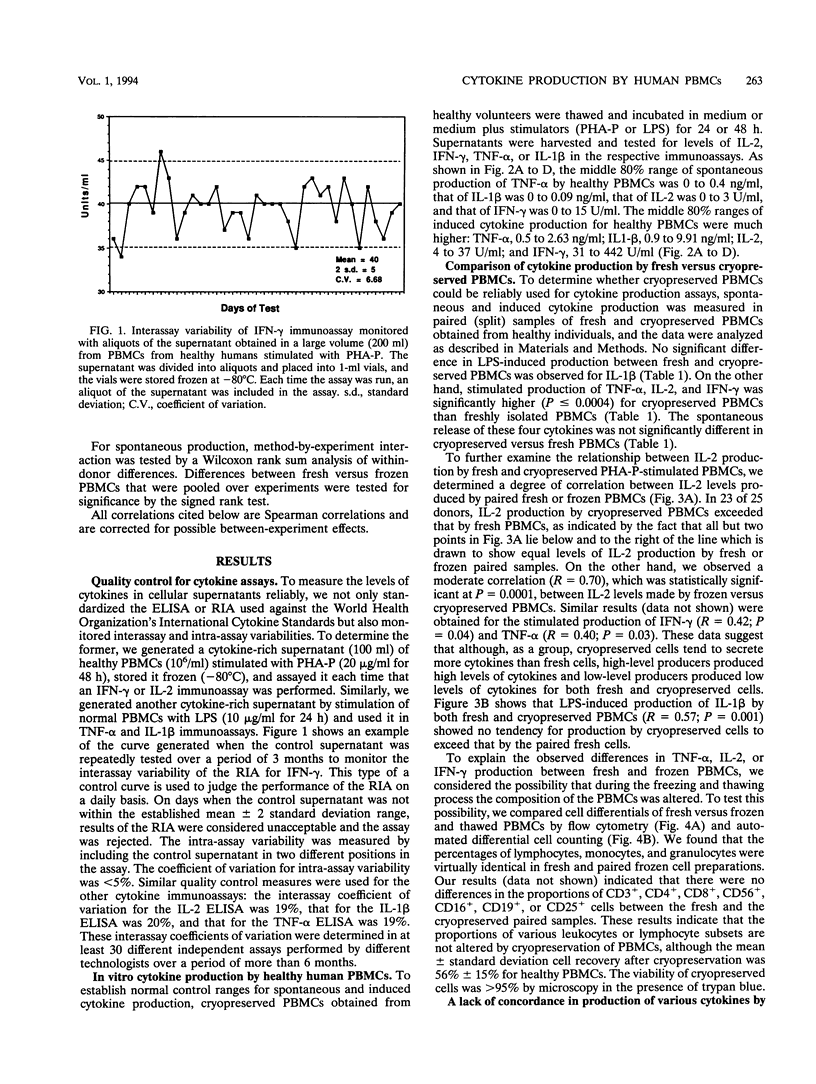
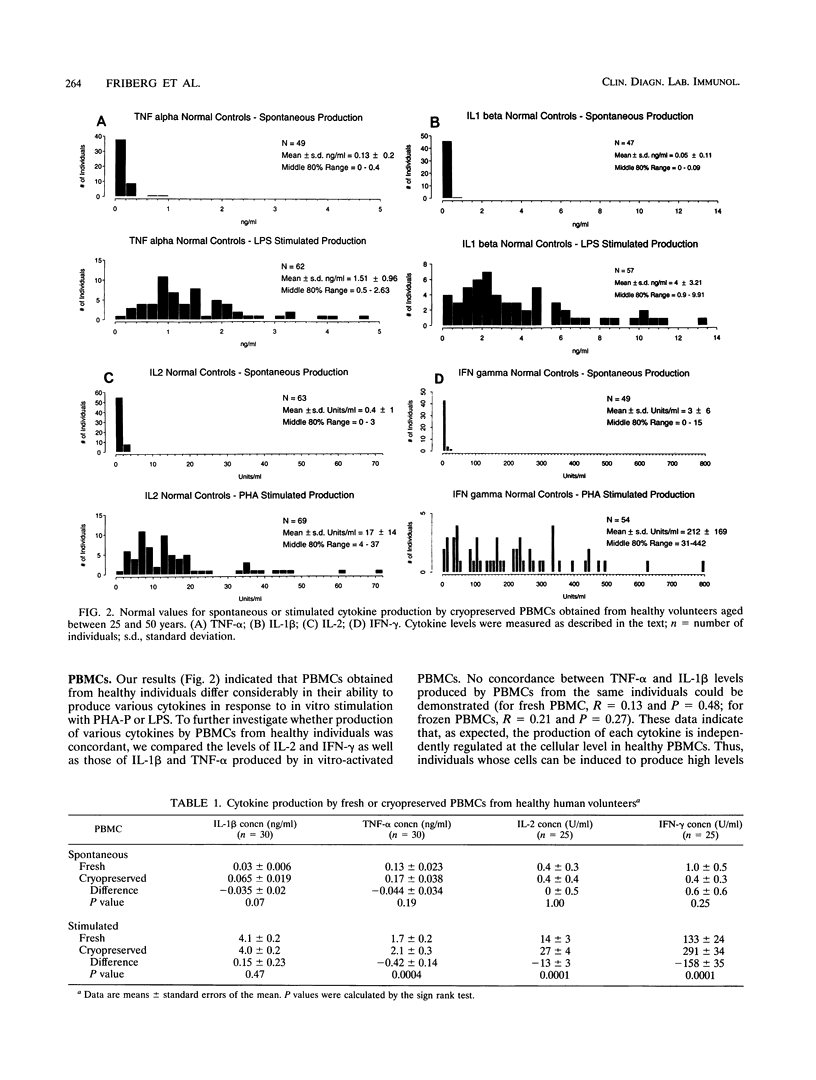
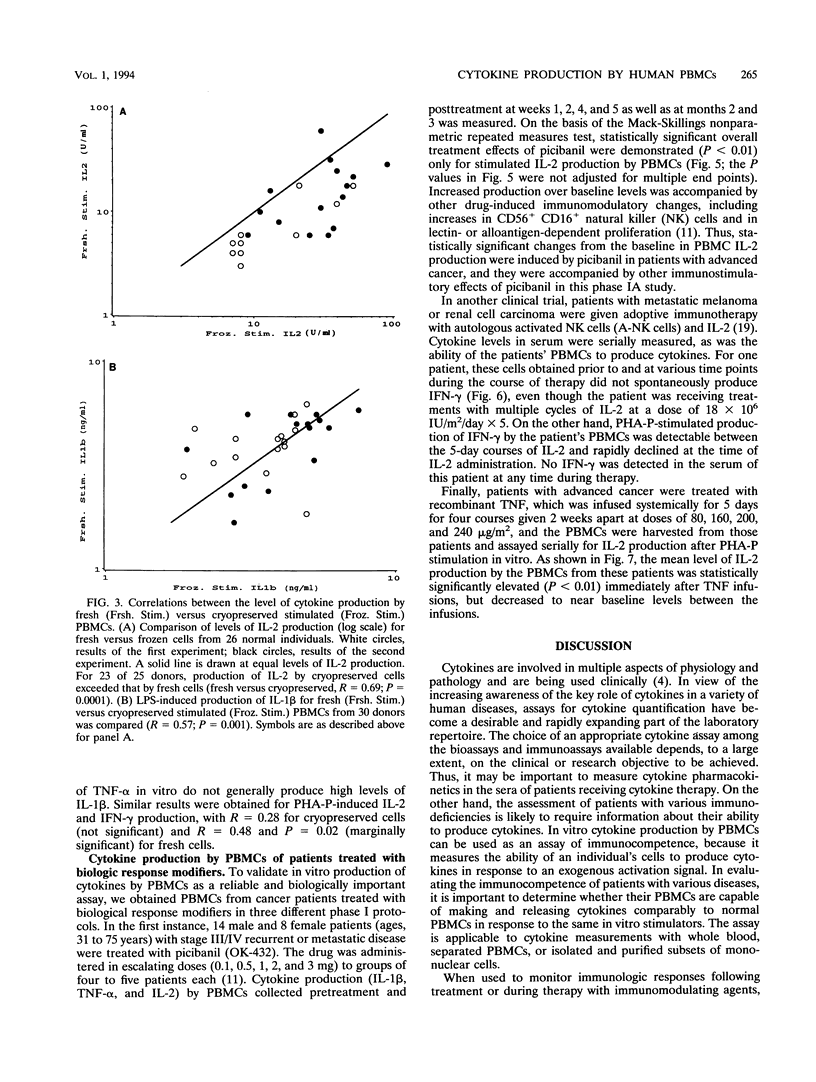

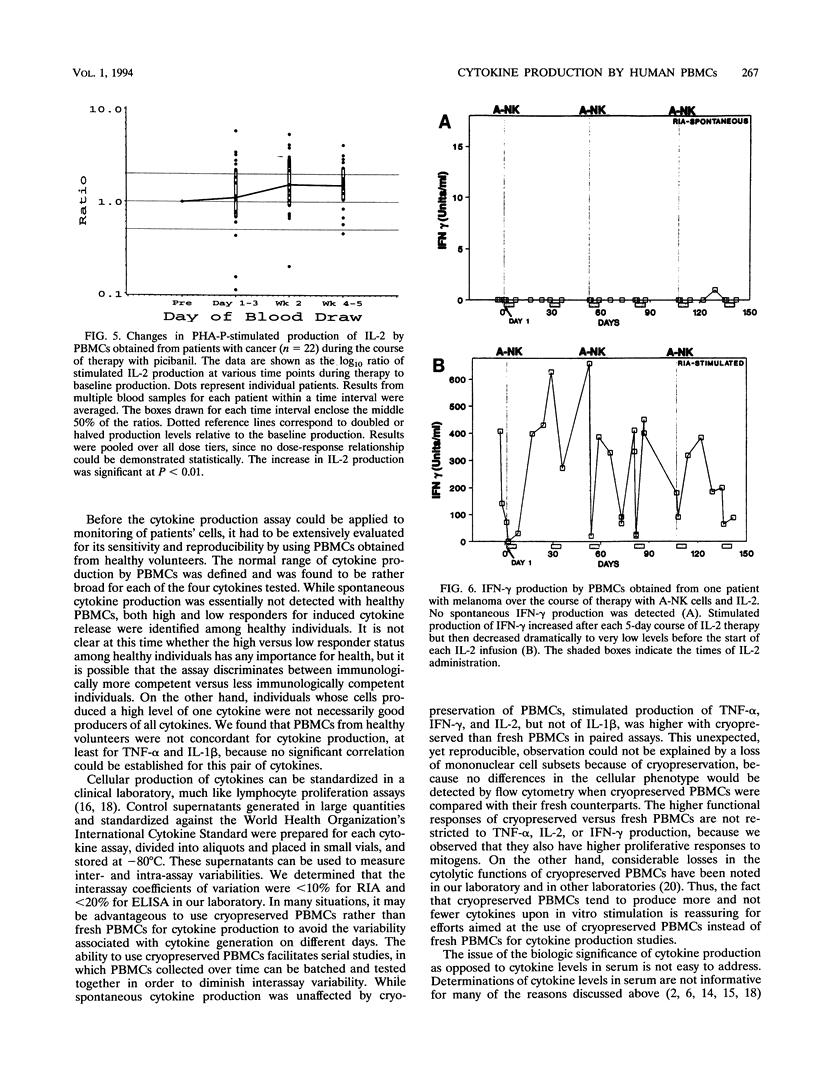
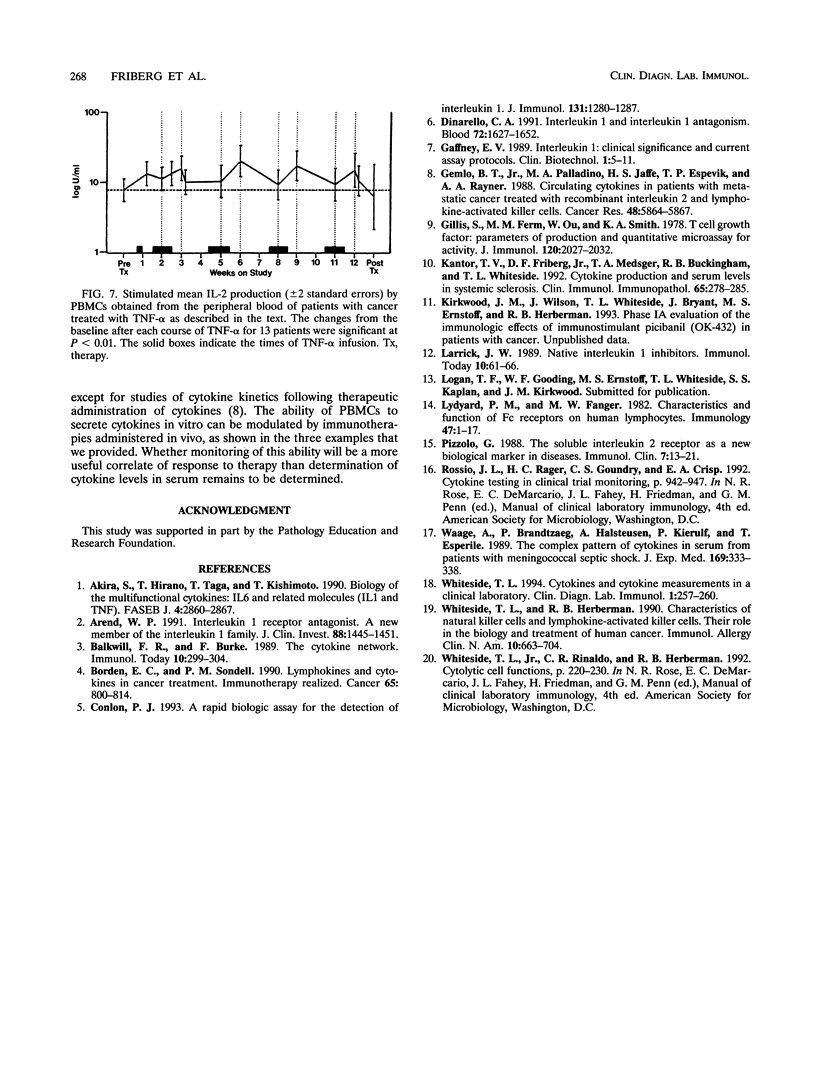
Selected References
These references are in PubMed. This may not be the complete list of references from this article.
- Akira S., Hirano T., Taga T., Kishimoto T. Biology of multifunctional cytokines: IL 6 and related molecules (IL 1 and TNF). FASEB J. 1990 Aug;4(11):2860–2867. [PubMed] [Google Scholar]
- Arend W. P. Interleukin 1 receptor antagonist. A new member of the interleukin 1 family. J Clin Invest. 1991 Nov;88(5):1445–1451. doi: 10.1172/JCI115453. [DOI] [PMC free article] [PubMed] [Google Scholar]
- Balkwill F. R., Burke F. The cytokine network. Immunol Today. 1989 Sep;10(9):299–304. doi: 10.1016/0167-5699(89)90085-6. [DOI] [PubMed] [Google Scholar]
- Borden E. C., Sondel P. M. Lymphokines and cytokines as cancer treatment. Immunotherapy realized. Cancer. 1990 Feb 1;65(3 Suppl):800–814. doi: 10.1002/1097-0142(19900201)65:3+<800::aid-cncr2820651328>3.0.co;2-y. [DOI] [PubMed] [Google Scholar]
- Conlon P. J. A rapid biologic assay for the detection of interleukin 1. J Immunol. 1983 Sep;131(3):1280–1282. [PubMed] [Google Scholar]
- Dinarello C. A. Interleukin-1 and interleukin-1 antagonism. Blood. 1991 Apr 15;77(8):1627–1652. [PubMed] [Google Scholar]
- Gemlo B. T., Palladino M. A., Jr, Jaffe H. S., Espevik T. P., Rayner A. A. Circulating cytokines in patients with metastatic cancer treated with recombinant interleukin 2 and lymphokine-activated killer cells. Cancer Res. 1988 Oct 15;48(20):5864–5867. [PubMed] [Google Scholar]
- Gillis S., Ferm M. M., Ou W., Smith K. A. T cell growth factor: parameters of production and a quantitative microassay for activity. J Immunol. 1978 Jun;120(6):2027–2032. [PubMed] [Google Scholar]
- Kantor T. V., Friberg D., Medsger T. A., Jr, Buckingham R. B., Whiteside T. L. Cytokine production and serum levels in systemic sclerosis. Clin Immunol Immunopathol. 1992 Dec;65(3):278–285. doi: 10.1016/0090-1229(92)90158-k. [DOI] [PubMed] [Google Scholar]
- Larrick J. W. Native interleukin 1 inhibitors. Immunol Today. 1989 Feb;10(2):61–66. doi: 10.1016/0167-5699(89)90308-3. [DOI] [PubMed] [Google Scholar]
- Lydyard P. M., Fanger M. W. Characteristics and function of Fc receptors on human lymphocytes. Immunology. 1982 Sep;47(1):1–17. [PMC free article] [PubMed] [Google Scholar]
- Waage A., Brandtzaeg P., Halstensen A., Kierulf P., Espevik T. The complex pattern of cytokines in serum from patients with meningococcal septic shock. Association between interleukin 6, interleukin 1, and fatal outcome. J Exp Med. 1989 Jan 1;169(1):333–338. doi: 10.1084/jem.169.1.333. [DOI] [PMC free article] [PubMed] [Google Scholar]
- Whiteside T. L. Cytokines and cytokine measurements in a clinical laboratory. Clin Diagn Lab Immunol. 1994 May;1(3):257–260. doi: 10.1128/cdli.1.3.257-260.1994. [DOI] [PMC free article] [PubMed] [Google Scholar]


